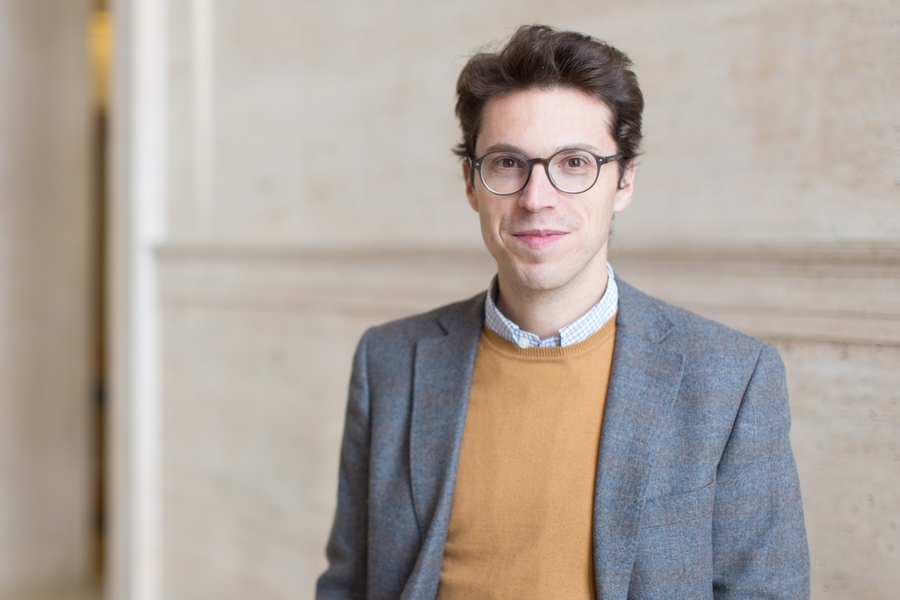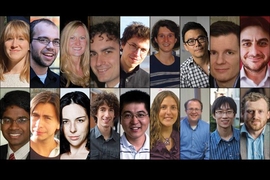As it pursues its mission of developing and applying nuclear technology for the benefit of society, MIT’s Department of Nuclear Science and Engineering (NSE) has cultivated a tightly integrated range of capabilities, from basic research to advanced implementation. The appointment of Nuno Loureiro as assistant professor of NSE will provide an important boost to the theoretical side of the department’s exploration of how plasmas work — the fundamental building block of fusion energy.
“As a theorist, I do pencil-and-paper calculations and first-principles computer simulations” explains Loureiro. “My approach tends to be to try to identify what the crucial building blocks of rather complex plasma phenomena might be, and investigate those at a fundamental level. I’m interested in understanding the wider scale, the essence of the situation. It’s a way of finding directions and being able to say, ‘Here’s an area we might want to look into.’”
Loureiro, who obtained his PhD in physics from Imperial College London and subsequently worked at the Princeton Plasma Physics Laboratory and the UK’s Culham Centre for Fusion Energy, comes to MIT NSE from a post as head of the Theory and Modelling Group of the Institute for Plasmas and Nuclear Fusion at the Instituto Superior Técnico (IST) in Lisbon, Portugal, where he did his undergraduate studies.
He received the 2015 Thomas Stix Award for Outstanding Early Career Contributions to Plasma Physics Research from the American Physical Society for his work towards clarifying the essential physics of magnetic reconnection — a ubiquitous, but little-understood, plasma phenomenon that affects fusion reactors and is present in many astrophysical and space-physical contexts.
Under normal conditions, magnetic field lines within a plasma do not break or merge with other field lines. But sometimes, when field lines converge, they realign and reconnect, leading to an explosive transfer of magnetic energy into the plasma. This is, for example, the phenomenon that lies at the heart of solar flares, and is also the driver of coronal mass ejections, which send out enormous clouds of plasma and generate geomagnetic disturbances, eventually leading to aurora.
“Plasma tends to misbehave when it’s confined; it often does what it wants to do,” observes Loureiro, who is beginning to establish a research group at MIT’s interdisciplinary Plasma Science and Fusion Center (PSFC). “When we see the sawtooth (a perturbing internal instability in fusion plasmas), it’s because of magnetic reconnection events. There are many other instances of magnetic reconnection in fusion devices: tearing modes, edge localized modes, etc. So understanding reconnection is vital for the fusion energy program. Indeed, turbulence and reconnection are perhaps the two most fundamental and ubiquitous plasma phenomena, and advances in understanding them in the fusion context enables progress in space and astrophysics, and vice-versa. It’s really very dynamic and symbiotic.”
It is here that a new supercomputer code, Viriato, developed by Loureiro comes in. “It’s a unique numerical tool whose underlying philosophy is to distill the essence of rather complicated problems such as turbulence and reconnection, and try to understand them at that level,” he explains. “Once that’s done, we can move on and add more layers of complexity — but we’ll then be building on much firmer ground than otherwise.”
Loureiro notes that he and his wife and their three children were comfortable in their native Portugal, but that the opportunity to join NSE’s community, with its formidable intellectual and physical infrastructure, was irresistible for a person with his goals. “I want to do the best science I can, and I can do better science here,” he says.
But Loureiro’s primary ambition for the next few years is to home in on a complete understanding of magnetic reconnection in the simplest possible plasma model. “It’s very rare in science to be able to say, ‘this problem is solved,’ but we’re close to being able to claim victory in answering fundamental questions that have been out there for 60 years,” he says. “It doesn’t mean the only solution or a complete solution, but we’re close to being able to say ‘these are the basic elements of magnetic reconnection,’ and I want my research here at MIT to play a pivotal role towards that goal.”







